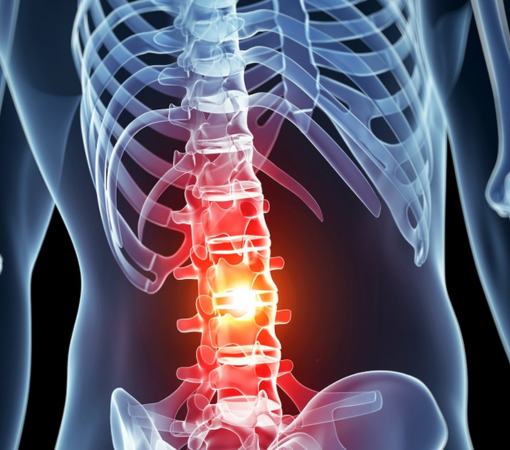Spine Surgeon
Spinal Cord Injury
Spinal cord injury
A spinal cord injury (SCI) occurs when there is damage to the spinal cord, disrupting its normal function and leading to a range of physical and neurological impairments. These injuries can result from trauma, such as accidents or falls, or non-traumatic causes like infections or tumors affecting the spinal cord. The severity of spinal cord injuries varies, with some causing temporary dysfunction, while others lead to permanent loss of sensation, movement, and bodily functions below the injury site. Treatment and rehabilitation strategies aim to minimize complications, restore function, and enhance the overall quality of life for individuals with spinal cord injuries.
What are the types of Spinal Cord Injury?
- Complete SCI: Total loss of sensation and function below the injury site, causing complete paralysis.
- Incomplete SCI: Retention of some motor or sensory function below the injury site, varying in severity.
- Tetraplegia (Quadriplegia): Paralysis of all four limbs, commonly from cervical spinal cord injuries.
- Paraplegia: Paralysis affecting the lower half of the body, typically caused by thoracic, lumbar, or sacral injuries.
- Anterior Cord Syndrome: Primarily affects the front portion of the spinal cord, resulting in specific motor and sensory deficits.
- Central Cord Syndrome: Greater impairment in upper limb function, often caused by injury to the central part of the spinal cord.
- Brown-Sequard Syndrome: Results from damage to one side of the spinal cord, leading to specific motor and sensory losses on opposite sides.
What are the Causes and Symptoms of Spinal Cord Injury?
Causes:
- Motor Vehicle Accidents: Auto and motorcycle accidents account for over 35% of new spinal cord injury cases annually.
- Acts of Violence: Approximately 15% of spinal cord injuries occur due to violent encounters involving knife wounds and gunshots.
- Falls: Falls, especially among individuals aged 65 and older, contribute to a quarter of spinal cord injuries.
- Alcohol: One in four spinal cord injuries is attributed to alcohol consumption.
- Sports and Recreation Injuries: About 9% of spinal cord injuries result from athletic activities, including diving in shallow water and impact sports.
- Diseases: Conditions like arthritis, cancer, spinal cord inflammation, and osteoporosis can also lead to spinal cord injuries.
Symptoms:
- Loss of Sensation: Inability to feel cold, heat, and touch.
- Exaggerated Reflex Activities or Spasms: Abnormal reflex responses or spasms.
- Loss of Movement: Impaired or complete loss of movement. Changes in Sexual Sensitivity and Function: Alterations in sexual sensitivity, function, and fertility.
- Respiratory Challenges: Difficulty in coughing, breathing, or clearing lung secretions.
- Intense Pain or Stinging Sensation: Pain caused by damage to nerve fibers in the spinal cord.
How to diagnose Spinal Cord Injury?
- Physical and Neurological Examination: A comprehensive examination of the patient’s physical and neurological status is conducted to assess reflexes, sensation, and motor function. This helps in identifying the exact location and severity of the injury.
- Spine X-rays: X-rays of the spine are taken to visualize the bones and assess for fractures or dislocations. This initial imaging provides essential information about the structural integrity of the spine.
- MRI or CT Scan of the Spine: Magnetic Resonance Imaging (MRI) or Computed Tomography (CT) scans are performed to obtain detailed images of the spinal cord, vertebrae, and surrounding structures. These imaging modalities help in identifying soft tissue damage, herniated discs, or other abnormalities.
- Somatosensory Evoked Potential (SSEP) Testing: SSEP testing involves the application of magnetic or electrical stimulation to specific nerves, assessing the speed of nerve signal transmission. This test provides information about the functionality of sensory pathways in the spinal cord.
- Myelogram: A myelogram involves injecting a contrast dye into the spinal canal, followed by X-rays to visualize the spinal cord and nerve roots. This procedure helps identify areas of compression, blockages, or abnormalities in the spinal canal.
What is the treatment for Spinal Cord Injury?
Medical Treatment:
In cases of acute spinal cord injury (SCI), standard medications may be administered intravenously to address inflammation and reduce damage to nerve cells.
Spinal Immobilization:
Stabilizing the spine is crucial, and traction may be necessary to achieve proper alignment. In specific cases, a rigid neck collar can serve this purpose, while specialized beds may assist in immobilizing the body. These measures aim to prevent further injury and promote the healing process.
What are the Surgery indicated for Spinal Cord Injury?
- Removal of Disc Fragments, Foreign Objects, and Bone Fragments
- Spinal Fusion or Placement of Spinal Braces
- Decompression Laminectomy and Spinal stabilization
Synapse Spine is your dedicated partner in addressing Spinal Cord Injuries, offering tailored treatment options for your unique needs. With a focus on minimally invasive surgery techniques, we strive to provide effective solutions with improved recovery times. Schedule your appointment today to begin your journey towards recovery with Synapse Spine.

